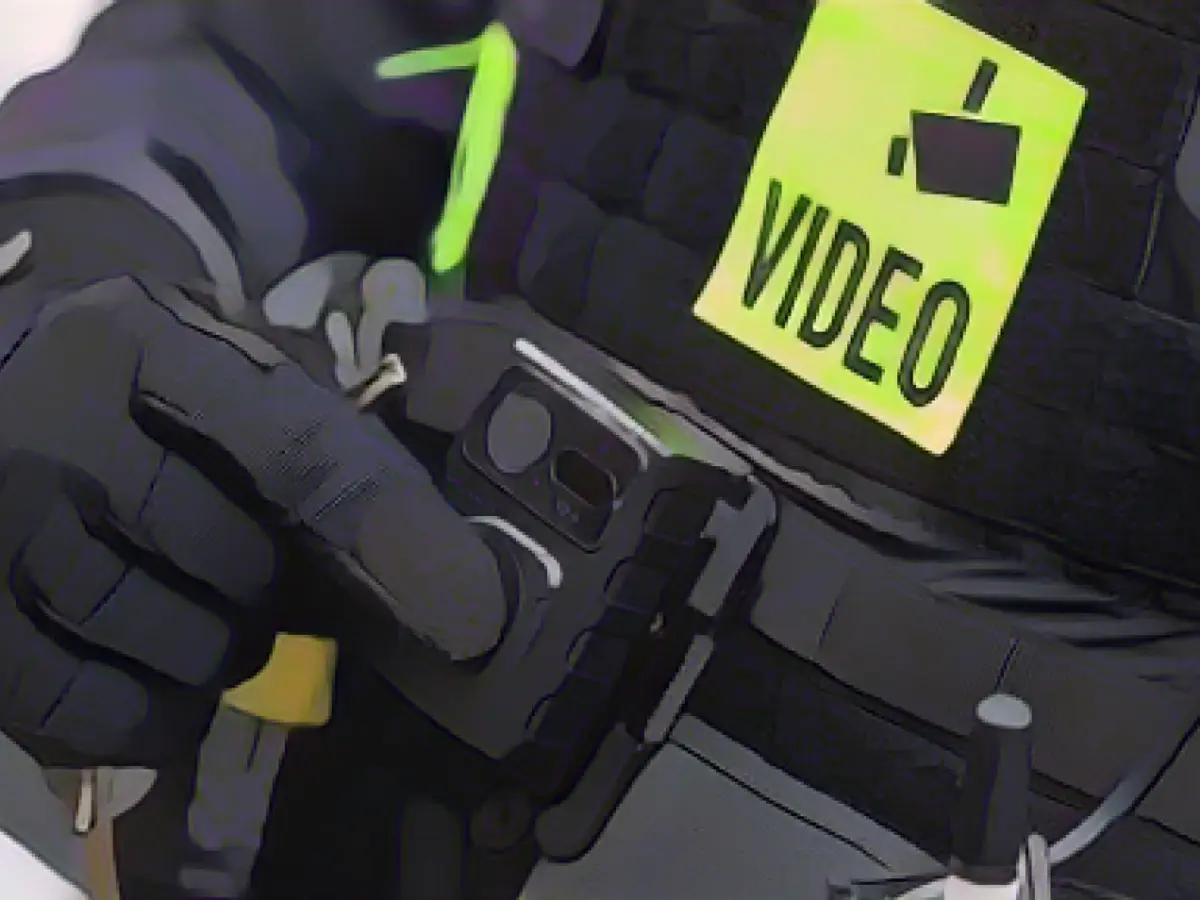Up the Ante on Police Bodycams in Lower Saxony
Nowadays, you'd be hard-pressed to find a police officer in Lower Saxony without a bodycam strapped to their uniform. The use of these tiny recording devices has skyrocketed in recent years, as reported by the Ministry of the Interior in Hanover to the German Press Agency dpa. From 883 in 2020 to the current count of 1129, these bodycams have become an integral part of the police force.
The main objective of these bodycams, according to the ministry, is to shield police officers and other individuals from violent encounters. They serve as a valuable tool in conflict situations, helping to defuse dangerous situations or even prevent them from arising. Moreover, bodycam footage can be used as evidence in criminal investigations.
As a result of this increased use, police officers with bodycams have become ubiquitous in public spaces, with the words "video recording" emblazoned on their uniforms. Recordings are transferred to a server via docking stations and deleted after 28 days if not necessary for prosecution.
While the police union in Lower Saxony supports this technological advancement, there are challenges that must be addressed. The requirement that bodycams may only be used on public roads or squares or in other publicly accessible places presents a challenge, especially in smaller police departments.
The Power of Evidence
Bodycams are not just popular in Lower Saxony – they are being adopted across Germany and beyond. Places like Hesse and Rhineland-Palatinate have seen a decrease in violence towards police officers due to bodycams. And in the UK, the Paisley and Aberdeen body-worn video project showed a reduction in assaults on officers and an increase in public reassurance.
Bodycam footage can significantly improve the quality of evidence provided by police officers at incidents. It can reduce complaints made by civilians, and it can protect officers from assaults. However, there are challenges that must be overcome, such as creating a clear legal framework and operational practices related to data storage and management.
Drawbacks and Concerns
While the benefits of bodycams are substantial, they are not without criticism. Some argue that the use of bodycams could lead to an invasion of privacy. Critics also question whether bodycams are truly protecting officers or just providing evidence for convictions.
The American Civil Liberties Union (ACLU) argues that bodycams can pose privacy concerns, as they capture a wide range of activities that may not be relevant to an investigation. Additionally, some experts worry that bodycams could create a "gotcha" culture, where police officers feel the need to always be recording in order to avoid criticism.
Final Thoughts
In conclusion, bodycams have become an essential tool in the police force in Lower Saxony. They offer numerous benefits, including improved evidence quality, reduced complaints, and increased officer safety. However, challenges related to privacy concerns, the legal framework, and operational practices must be addressed in order to ensure their effective and ethical use. As the adoption of bodycams continues to spread, it will be crucial to strike a balance between the pros and cons of this technology in order to ensure a safe and just society for all.
Sources:
Enrichment Insights:
- Bodycams have become increasingly popular in Germany and beyond, as they offer numerous benefits to both the police and the general public.
- Evidence from bodycams can significantly improve the quality of evidence provided by police officers at incidents, reducing complaints and protecting officers from assaults.
- However, there are challenges related to privacy concerns and the creation of a clear legal framework for the use of bodycams, as well as concerns about the impact of bodycams on police culture.
- In order to ensure the effective and ethical use of bodycams, it will be crucial to strike a balance between their benefits and the concerns raised by critics.





